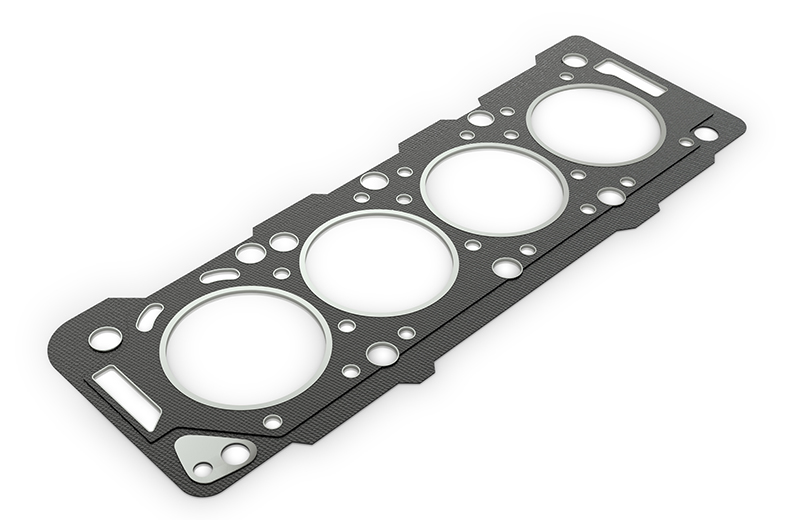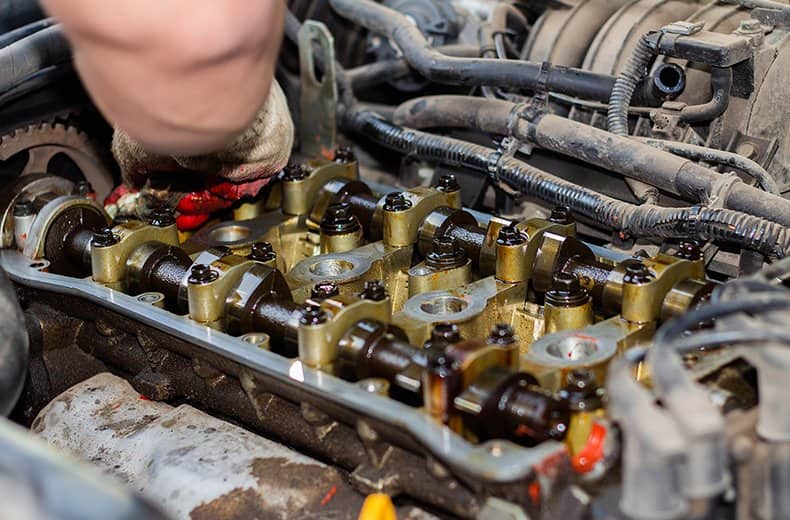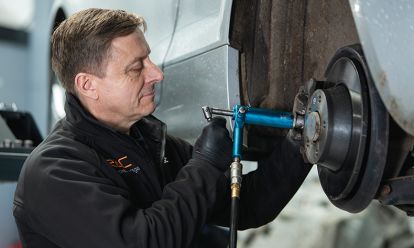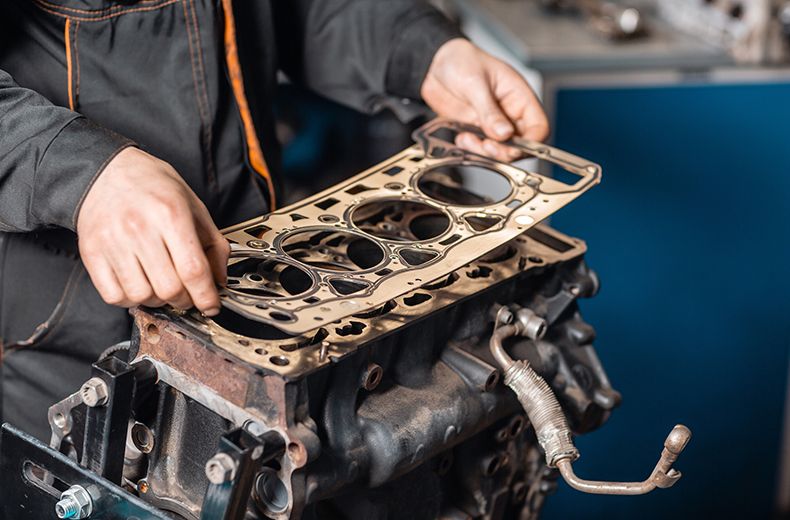But is a failed head gasket the death sentence for your car that many claim it is?
Read our Q&A to better understand this vital part of your engine and perhaps prevent future problems.
What is a head gasket? What does a head gasket do?

The head gasket seals the internal combustion process and keeps coolant and oil from mixing together.
It’s found between the cylinder head at the top of the engine and the block, the main structure of the engine.
It’s the most stressed gasket in the engine because unlike any other, it simultaneously seals oil, coolant and compression from the cylinders.
The head gasket seals oilways between the cylinder head and block allowing oil to circulate freely around the engine. It does the same with waterways, so coolant can travel where it’s needed.
How does a head gasket become faulty?
Diagnosing problems in the head gasket can be difficult as it sits largely out of sight in an assembled engine.
A perforation to your gasket, or a dreaded blown head gasket, usually occurs through overheating.
However, pre-ignition trouble could see fuel combusted at the wrong time, sending large amounts of pressure into the cylinder head and causing perforations further down the line.
A bad head gasket or one that isn’t installed properly is also likely to blow further down the line. It’s important that head bolts are turned so they’re not too loose to form a seal and not too tight, crushing the gasket and preventing a seal to form.
What are the signs that a head gasket has become faulty?
The most common signs that your head gasket is faulty include:
- White or milky oil: When coolant seeps into the oil and the two mix, a milky white liquid can be seen on the dipstick or around the engine’s oil filler cap
- White exhaust smoke: When coolant flows into the combustion chamber it burns/evaporates as white smoke
- Loss of power: A perforation to the gasket will cause pressure in the combustion chamber to decrease along with your engine power
- Water or sweet smell from exhaust: This can occur as a result of leaks in the combustion system
- Overheating engine: If the head gasket leaks coolant your engine becomes susceptible to overheating
Find out what to do with an overheating car.

RAC sale – up to 33% off*
• Roadside cover from £5.29 a month†
• We get to most breakdowns in 60 mins or less
• Our patrols fix 4/5 breakdowns on the spot

How much does it cost to repair a blown head gasket?

This varies widely depending on your car and garage, but it can cost anywhere from £500-£1000. Leaving a faulty head gasket unrepaired can result in further engine damage.
Warped cylinder heads usually occur when the head gasket fails to provide a seal and the cooling system fails. These tend to cost over £900 to repair.
Find a garage or find an RAC Mobile Mechanic
What is head gasket sealer? How much does it cost?
Head gasket sealer is a liquid that seeks out cracks in the gasket and fills them using targeted chemicals. Prices vary from around £10 to £40.
How does head gasket sealer work? How do I use it?
Head gasket sealer is poured into the radiator and once hot enough, fills cracks and perforations. Running the car for about 15 to 30 minutes with the heater and fan on high helps trigger the sealer.
Many people are sceptical about the long-term powers of a chemical when fixing a mechanical fault, and a sealer should only ever be used as a temporary fix.
Can I drive with a blown head gasket?
While it’s possible to drive with a blown head gasket it certainly isn’t recommended. Once the seal is blown, pressure in the combustion chamber is lost and you’ll feel a significant loss of power.
If your blown head gasket is causing coolant to leak, your engine is far more likely to overheat. This will incur further cracking and damage to your engine.
If motor oil mixes with coolant it becomes diluted and doesn’t offer the same level of lubrication, this could lead to irreparable damage.
Car playing up?
Get quality repairs at a fair price, plus a 12 month warranty with RAC Approved Garages.


How to prevent a blown head gasket
Head gasket failures are usually the result of engine overheating, so ensure coolant is topped up and the coolant system is in good working condition, with no leaks and an efficient radiator.
A properly-installed head gasket will also prevent future damage. Ensure you use bolts that are in good condition and are suitably tightened. Too loose and a seal won’t form, too tight and you risk crushing the gasket.
It’s always important to use sealers as directed on the packaging - or to find a reliable garage to get a mechanic to do it for you.
Is a blown head gasket the end of my car?
A blown head gasket alone won’t make your car undriveable, but the knock-on damage it causes for non lubricated bearings and overheating parts can deem your engine irreparable.
It’s always best to use a sealer at the earliest stage and seek professional help as soon as possible to repair the head gasket before it affects other areas of your car.
Use our search tool to find your nearest RAC Approved Garage.
- Car leaking? How to identify liquid dripping from your car and what to do
- The ultimate guide to car parts and what they do – with pictures
- MOT checklist and comprehensive guide
- 11 ways to reduce your driving emissions
Do you have a head gasket horror story? Perhaps you or your garage managed to bring a car back to life? Leave us a comment below.
If your MOT is due or if you would like to book your vehicle in for a full car service, you can book online with your local RAC Approved Garage today.
Book a car service today
It’s easy to book a service online at one of our local approved garages. Find a trusted local garage with the RAC stamp of approval.












